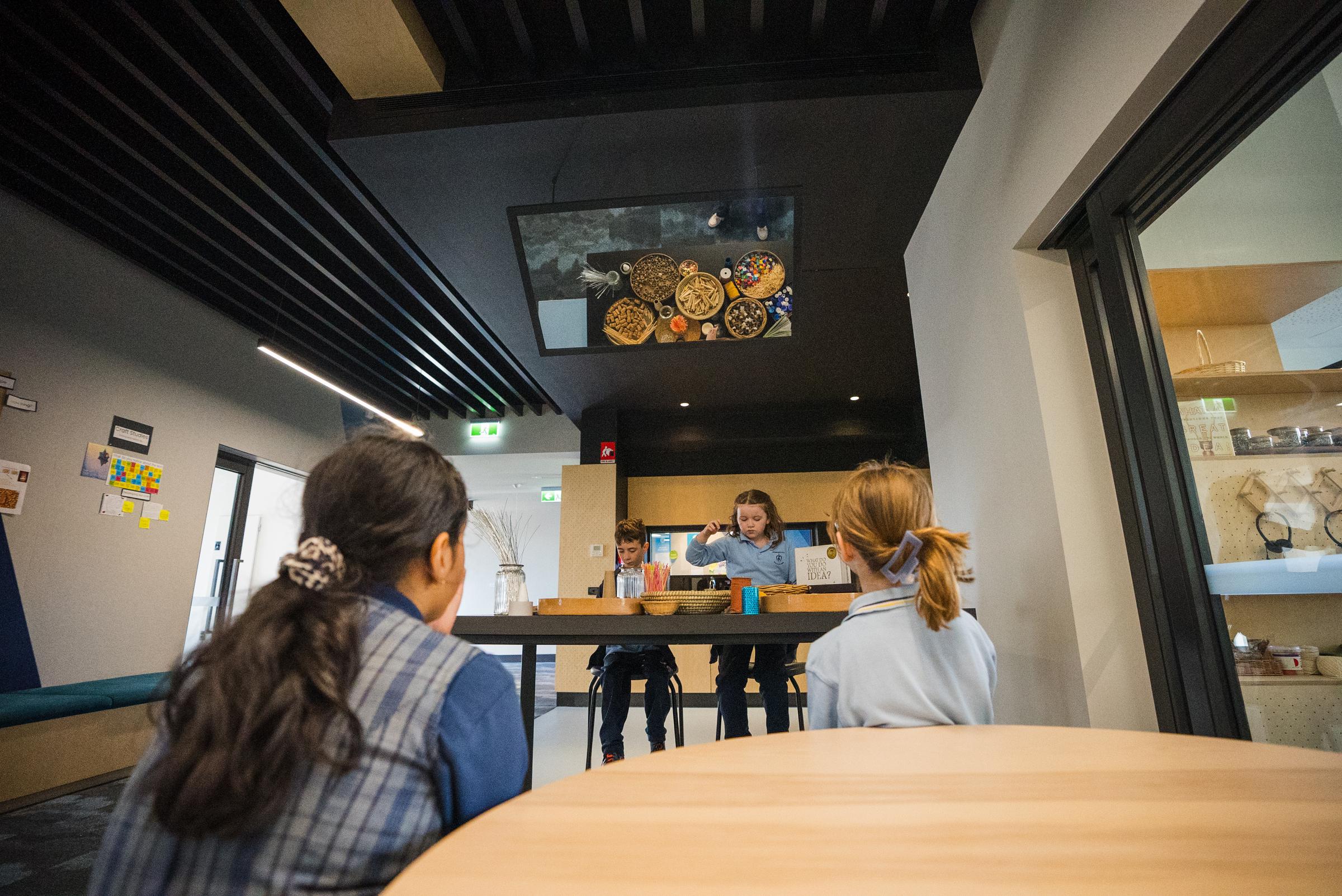Learning & Teaching

NAPLAN
Earlier this year, our Year Three and Year Five children participated in the National Assessment Program – Literacy and Numeracy (NAPLAN). NAPLAN is an annual national assessment for all students in Years 3, 5, 7 and 9. Our children participated in four assessments, which included Reading, Writing, Language Conventions and Numeracy.
NAPLAN data is organised in four proficiency standards, which include:
- Exceeding: the student’s result exceeds expectations at the time of testing.
- Strong: the student’s result meets challenging but reasonable expectations at the time of testing.
- Developing: the student’s result indicates that they are working towards expectations at the time of testing.
- Needs additional support: the student’s result indicates that they are not achieving the learning outcomes that are expected at the time of testing. They are likely to need additional support to progress satisfactorily.
The NAPLAN data obtained from Year Three tests indicate that the majority of our children in the cohort performed within the ‘strong’ proficiency standard for Writing, Reading and Spelling (Language Conventions). Similarly, the data from the Year Five tests show that the majority of students in the cohort performed within ‘strong’ proficiency standards for Writing, Reading, Spelling, Grammar and Punctuation and Numeracy.
As stated on the Australian Curriculum Assessment Reporting Authority (ACARA) website, a new results time series was established from 2023, which means that results from 2023 onwards cannot be directly compared to the results from 2008 to 2022, and as such we are unable to comment on the relative growth experienced by our Years Five students since their Year Three NAPLAN testing.
Literacy
The Book Fair is coming to St Gabriel’s. It will be open on Wednesday 21st of August and be here until Monday 26th August.
Come by before and after school where you can support our school whilst getting your hands on the best new children’s books!
Writing:
As we move through the term, our children will be exploring the writing genre of ‘write to explain’.
This is where we explain how things work, how things come to be the way they are.
Building the necessary vocabulary around how something works is very important.
You may want to reinforce vocabulary at home by asking the following questions:
- How does your ___ work?
- Why did your block tower fall down?
- What do you need to make ____?
- Did you have any problems? What did you do?
Book Week Parade!
Maths
Location and Position
Prep - 2
In Maths, the children will explore Location and Position. They will learn to describe positions and movements such as left, right, forward, and backward. They will practise giving and following directions to move people and objects to different locations within a space. The children will explore various maps, interpret familiar places, and identify the positions of important landmarks or features. They will create and use maps to give and receive directions from their peers.
Here is a fun activity you can do at home to help your child practise these skills:
Treasure Hunt Adventure:
- Materials Needed: Paper, markers, and a small prize or treat for the treasure.
- Setup:
- Draw a simple map of your home or backyard, marking key locations (e.g., kitchen, living room, garden).
- Hide a small treasure (could be a favourite toy or treat) in one of these locations.
- Activity Instructions:
- Show your child the map and explain how it represents your home or yard.
- Start with simple instructions like "Go forward two steps, then turn left," and help them find their way to different locations on the map.
- Gradually increase the complexity of instructions as they become more confident.
- Encourage them to use directional words (left, right, forward, backward) as they navigate.
- Finding the Treasure:
- Once they are comfortable reading and following the map, give them instructions to find the hidden treasure.
- Celebrate their success and discuss what they learned about positions and movements during the activity.
Year 3-6
In Years 3-6, our children will be learning about Angles. They will explore various types of angles, including right, acute, obtuse, and straight angles. They will compare and categorize geometric shapes based on their properties and dimensions, and apply their knowledge to find unknown angles in triangles, quadrilaterals, and regular polygons.
Understanding angles is crucial, as they play a vital role in our everyday lives. They contribute to designing efficient streets and cities, help us tell time using the sun and shadows, and aid in measuring astronomical distances to planets and stars. Lines and angles are involved in nearly every aspect of daily life.
1/2 Camp Dinner
If you have not already, please use the Link to RSVP - https://forms.gle/47xY7dk6LAZJd7Vg7





